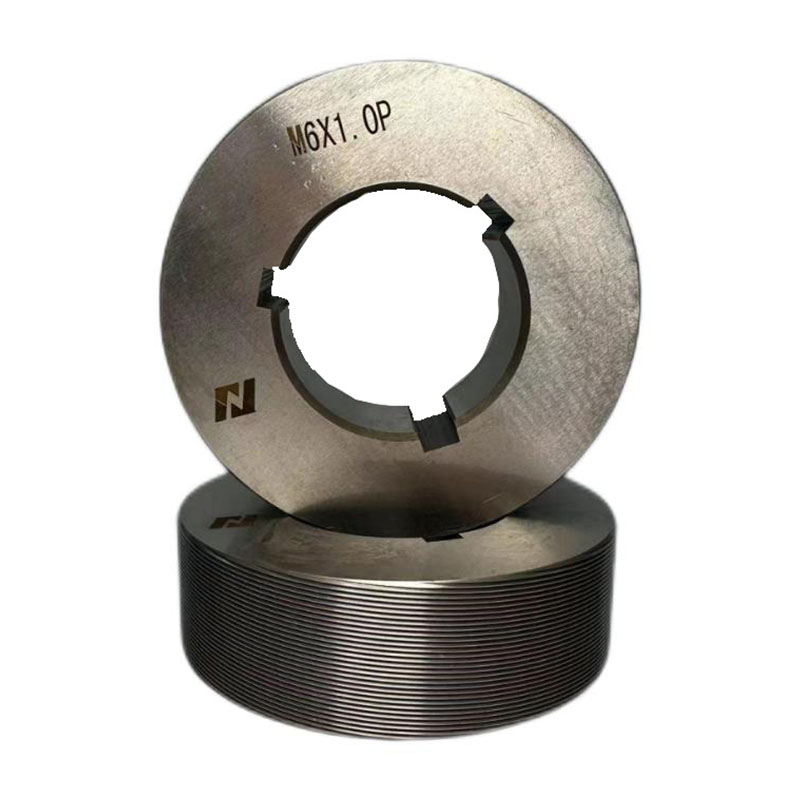
- English
- Español
- Português
- русский
- Français
- 日本語
- Deutsch
- tiếng Việt
- Italiano
- Nederlands
- ภาษาไทย
- Polski
- 한국어
- Svenska
- magyar
- Malay
- বাংলা ভাষার
- Dansk
- Suomi
- हिन्दी
- Pilipino
- Türkçe
- Gaeilge
- العربية
- Indonesia
- Norsk
- تمل
- český
- ελληνικά
- український
- Javanese
- فارسی
- தமிழ்
- తెలుగు
- नेपाली
- Burmese
- български
- ລາວ
- Latine
- Қазақша
- Euskal
- Azərbaycan
- Slovenský jazyk
- Македонски
- Lietuvos
- Eesti Keel
- Română
- Slovenski
Spline Rolling Dies
You can rest assured to buy NERES Spline Rolling Dies from our factory and we will offer you the best after-sale service and timely delivery. Sines and serrations are commonly used for torque transfer applications that require precise coordination with mating parts, rather than rolls that usually do not require precise fit. Half shaft, drive shaft, EV motor shaft and power output shaft are common types of splined and serrated components. Splines and serrations on the solid shaft can be rolled on Neres equipment using a feed with two molds or a single-loop roll process. In hollow shaft applications, a forced-pass rolling process with three molds can be used. The forced through-feed rolling process can also be used to produce continuous length splines and serrations on solid and hollow axes using two or three molds. The Neres spline process can achieve ANSI 5 (DIN 8) or higher accuracy tolerance.
Send Inquiry
You can rest assured to buy NERES Spline Rolling Dies from our factory and we will offer you the best after-sale service and timely delivery. Sines and serrations are commonly used for torque transfer applications that require precise coordination with mating parts, rather than rolls that usually do not require precise fit. Half shaft, drive shaft, EV motor shaft and power output shaft are common types of splined and serrated components. Splines and serrations on the solid shaft can be rolled on Neres equipment using a feed with two molds or a single-loop roll process. In hollow shaft applications, a forced-pass rolling process with three molds can be used. The forced through-feed rolling process can also be used to produce continuous length splines and serrations on solid and hollow axes using two or three molds. The Neres spline process can achieve ANSI 5 (DIN 8) or higher accuracy tolerance.
Spline key and serrated geometry The spline and serrated shapes are described by the involute contour geometry, with the top plane, root plane, pressure angle, and radius transition with a fixed string pitch. The splines and serrations are either straight (parallel to the axis of the part) or have a guide (spiral angle). Splines typically have pressure angles of 20 to 37.5, while serrations usually have pressure angles of 25 to 45. The ANSI B92.1 and B92.2M, ISO 4156, DIN 5480 and 5481, SAEJ-500 and JIS specifications define industry standards for splines and serrations used worldwide. The most important characteristics of splines and serrations are the accuracy or separation error of wire size and tooth spacing. Sines and serrations are usually classified by diameter pitch equal to the total number of teeth on the circumference divided by the preroll rough diameter, or modulus equal to millimeter diameter divided by the number of teeth. Depending on the tolerance grade, pressure angle, and tooth geometry, Kinefac cylindrical molding processes with up to 2.5 strips and splines and serrations without block teeth can be used.
















